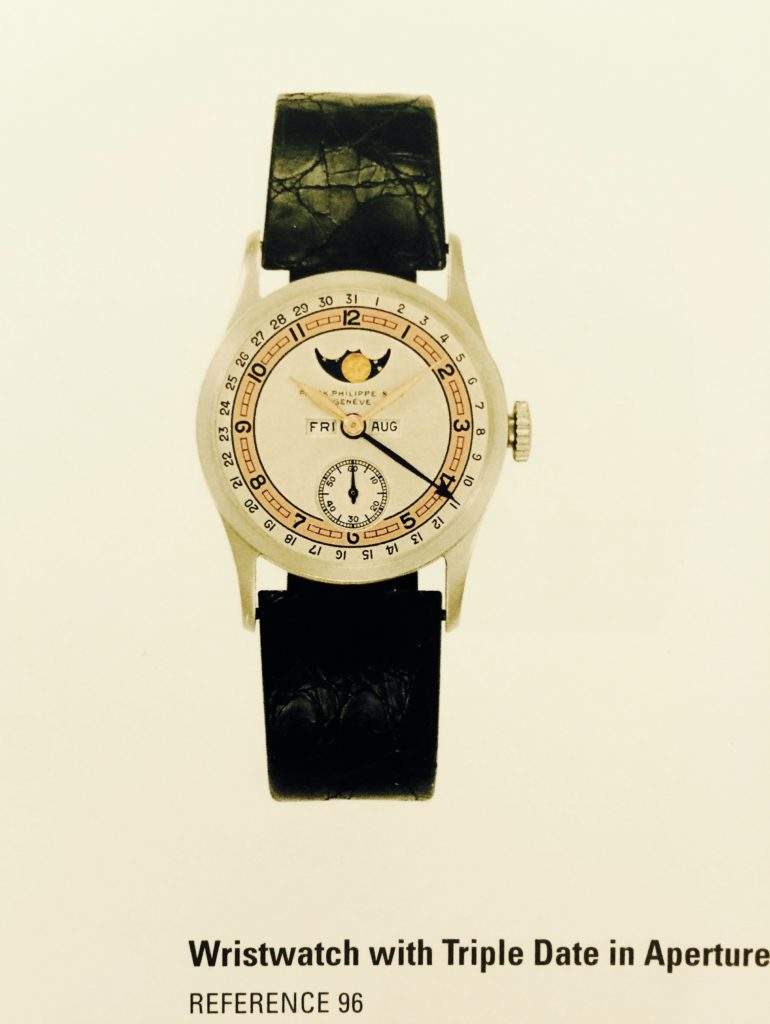Welcome to the second edition of PAK or Past Auction Killers. (My Rolex aficionados should note – my next PAK will be a Rolex watch).
The other day I was doing some basic research on the Ref 96 of Patek.
You might be familiar with the Ref 96 of Patek Philippe. It was the first ever Calatrava – the legendary case shape that still today is at the heart of Patek Philippe (in fact I very humbly admit that I just recently found out that the Calatrava started with Ref 96). The ref 96 introduced in 1932 by Patek was inspired by the Bauhaus school of design. For me the Ref 96 is simple, pure and minimalist design. Although it is a simple watch, it is of tremendous importance to Patek.
Yes you could compare the Calatrava to the legendary oyster case of Rolex. Timeless. Beautiful. Iconic in design.
At first the ref 96 was supplied with Le Coultre movements but from 1934 Patek used their own in house movement. Most of the Ref 96 that I had come across were either cased in steel, gold and platinum with no complication other than a time only. Remember we are talking 1930s and early 1940s here. A few weeks ago I was going through an old auction catalogue I had, dated 2011 – which also was the beginning of when I started wristwatch collecting in a more serious way – and I came across a very unusual watch.
A 1940 ‘Full Calendar’ Ref 96 Patek Philippe.
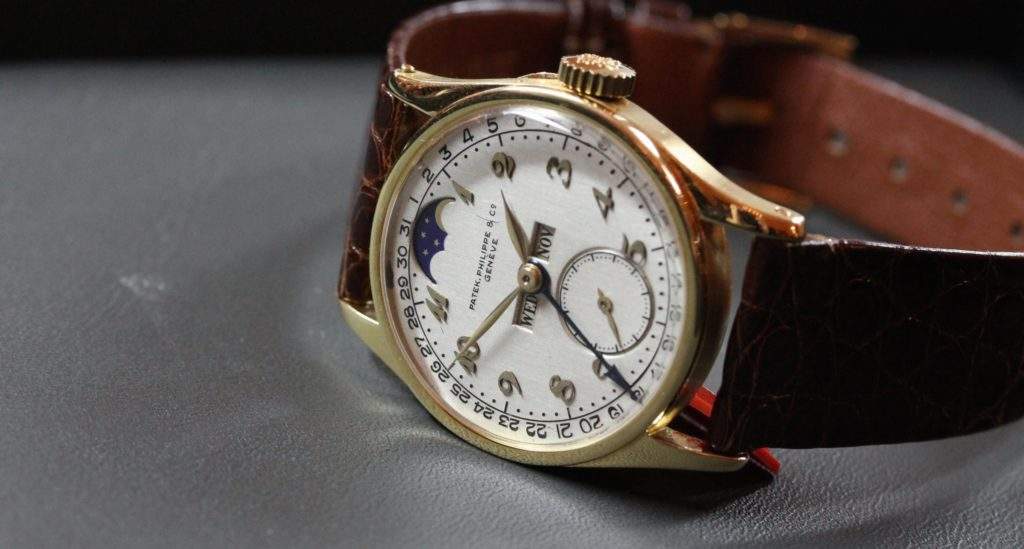
(Credit: Watchonista).
Now you might think the Full calendar is nothing special and in some ways it is not.
Already in 1925 Patek made its first perpetual calendar – a unique piece sold to T Emery. Then in 1941 in made it first perpetual calendar in series, the 1526*. But the Ref 96 is the first wristwatch with a complication (full or triple calendar) to be found in more examples than one. In that respect this full calendar is extremely important – as it is one of the very first complicated wristwatches to leave the Patek Philippe workshops. Yes that is right. You are looking at one of the very first complicated wristwatches to leave the Patek workshop.
Ever.
Remember this watch was made in the 1930s (well before any 1518 or 1526). This ref 96 with a full calendar is one of the first signs of evidence that Patek was a serious wristwatch maker (well noted that in the 1930s pocket watches were still very popular). Patek in that respect was a pioneer: It put a complication in one of its most legendary designs – well before most others brands would.
This Ref 96 in Gold was made in 1937 and sold only three years later in 1940 to Tiffany in New York.

(Credit: Christies).
Lets take a look at this absolute beauty more closely.
The watch as mentioned is a Calatrava Ref 96 with a case size of 30mm. The case design was made and sketched by Victorin Piguet. As Christies correctly states in the lot notes of this watch:
‘This watch was made at a time when complicated wrist-watch making was still in its infancy. These were the very first wristwatches with any complication and really represent the emergence of the wristwatch that could do more than just tell the time’.
The design of this watch is just perfect. It is so timeless that today this watch could easily sit the collection of Patek and not look out of place.
The dial (confirmed by the extract) has Breguet numerals. The date is displayed on the outer ring and the month and day in the window. The moon phase is positioned on top – most of the future moon phases including the 1526 perpetual and 1518 perpetual calendar would be positioned below at 6 o’clock. Notice also the long signature of Patek Philippe & Co which would eventually change to just Patek Philippe a few years later in the mid 1940s.
The movement (made by Patek in house) has a wolfs teeth winding system movement inside. The movement is signed Patek Philippe.
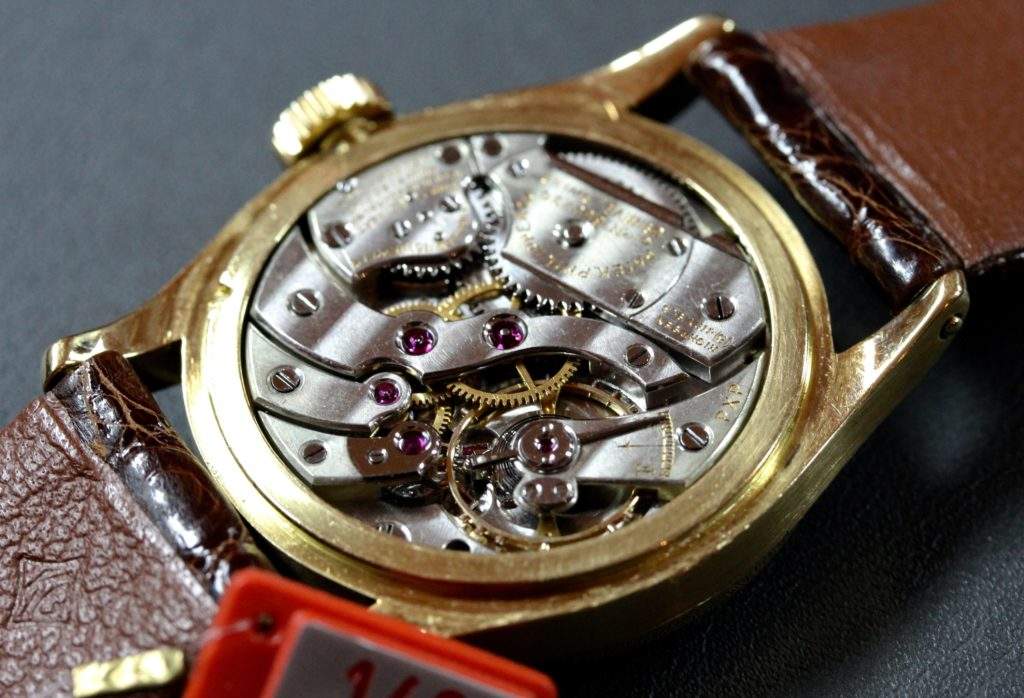
(Credit: Watchonista).
Christies November 2011 in Geneva
This dream watch was sold in November 2011 in Geneva with Christies.
What is most interesting is the price it achieved when this sold back in November 2011. The estimate was CHF 350- 550’000. This watch did not even achieve its high estimate – selling for CHF 507’000. I think the world economy played a role here though. In 2011 the financial markets were still in disarray and watches for all collectibles had just started only slowly picking up. Prices were still weak across the board.
Why this is a true PAK watch
Make no mistake. This full calendar Ref 96 is a trophy watch. It is a unique piece.
Although there are 5 known ref 96 with full calendar – with two platinum versions that sit safely in the Patek museum (see pictures below) – there is no second watch like this – cased in gold and with Breguet numerals and a moon phase at 12 o’clock. As I am aware only two other Ref 96 full calendar watches were ever auctioned, one in platinum (see here) and one in gold with roulette dial (see here). However both are not as important in my opinion as this watch we are highlighting here.
How important is this watch? Let me put this very straightforward. In my opinion – this is more important than most 2499 and 1518 (except the steel one).
This watch ref 96 with full calendar has all the ingredients to make this watch a trophy asset. Let me list them for you:
- Its a complicated movement (triple calendar, with day, date, month and moon phase).
- One of the first complicated wristwatches to leave the Patek workshops.
- The watch is the first Calatrava (ref 96) – arguably the most legendary and important model for Patek.
- It has Breguet numerals.
- The watch is a unique piece.
- Last but not least it was sold to Tiffany in New York.
You might think the Tiffany factor is not that important. But it is. It is perhaps the most important of all. Let me explain.
It was Tiffany that helped Patek ‘out‘ (in terms of placing some large orders) in the very beginning in order to survive (having signed the first agreement together in 1876). In fact you could argue if it had not been for Tiffany – Patek might not have survived at all. Tiffany placed a large order of watches that helped Patek find stable footing. So this watch is an early example of a legendary co-operation of two great firms that would help each other later on. Thus in terms of historic importance – this watch ranks extremely highly.
My opinion on this watch is very clear: It belongs in the Patek Museum**. Plain and simple. This watch represents Patek’s DNA like not other in my opinion. Calatrava? Yes – the very first! Tiffany sold? Yup. Breguet numerals? Yes Sir. Complication built inside? Si Senoir.
This ref 96, my friends, is a museum piece and a collector snapped it up for relatively little money – even back in 2011.
What would this fetch today? It is difficult to say but according to Aurel Bacs (who originally sold this watch) – the watch is easily worth more than double the price today which makes it a million dollar watch.
* Credit: Man of the world
**NB: The Patek Museum indeed has two Full calendar ref 96 watches in their museum. See pictures below.
Main picture credit: Watchonista
Here the first platinum version of the Ref 96 with full calendar that sits in the Patek Museum.
This is also a dream watch, and I have to admit, it closely rivals the gold watch above (pity the Breguet numerals are absent). Again open moon phase at 12 o’clock and calendar outer ring. Like the main watch above this watch was delivered to New York in 1940 to the Bulova watch co.
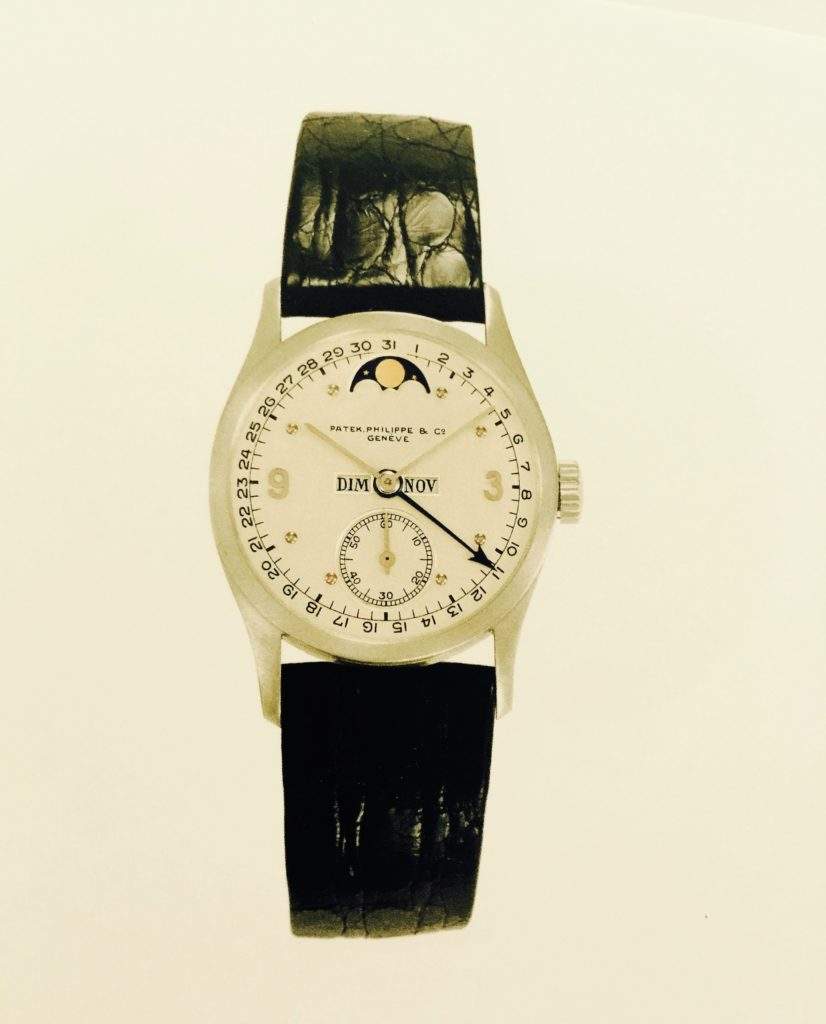
(Source: Patek Philippe Museum Watches Volume II page 283)
For readers that would like more information on this platinum watch – see the details below.
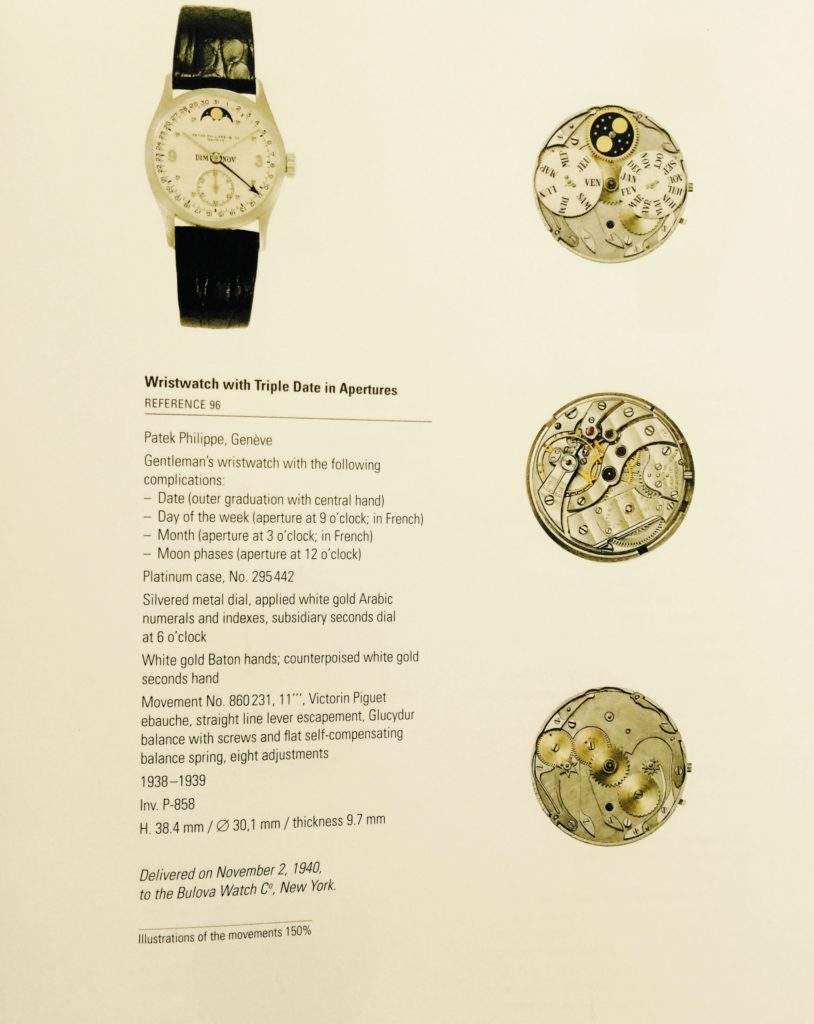
(Source: Patek Philippe Museum Watches Volume II page 283)
The second platinum Patek ref 96 triple calendar that sits in the Patek Museum is the watch below.
